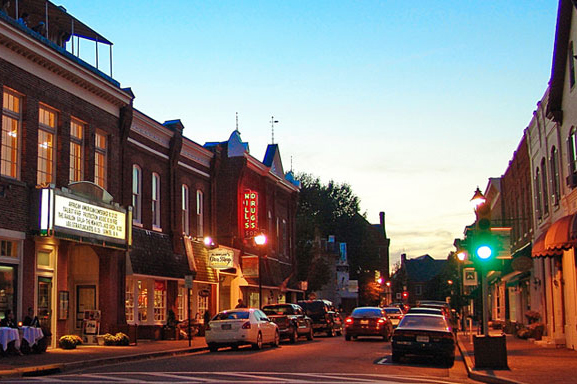Easton, Maryland
Three weeks before the election, I went to an event here in Easton where writers of various kinds — journalists, historians, speechwriters — read texts about political rhetoric and discussed them around a seminar table. Is rhetoric a set of tricks, as Socrates said, or an art, as Aristotle would have it? Lately politicians seem so constrained by propriety that they cannot say anything at all. Barack Obama ended his speech to the Democratic National Convention in August with ‘God bless.’ Sorry, God bless what? America? Joe Biden? Or did someone sneeze?
In front of the Talbot County Courthouse in Easton is a beautiful monument to the 85 ‘Talbot Boys’ who fought in the Civil War. What is interesting is that, while Maryland took the side of the Union, those boys — and Talbot County more generally — did not. And Maryland itself vacillated. Sentiment was moving toward secession in 1861 when Abraham Lincoln had dozens of members of the state legislature arrested to forestall it. A second monument stands opposite, commemorating Talbot County’s greatest native son, the escaped slave, abolitionist intellectual and memoirist Frederick Douglass. Towering figure though Douglass is, his statue is cheap and tinny — an embarrassing counterpart to the Talbot Boys. This is natural: the Talbot Boys memorial, say what you will about it, went up in 1916, in the golden age of public statuary. It is an artwork first and foremost, even if it makes a political statement.
The Douglass statue went up in 2011, in the golden age of political agitation. It is an ideological gesture first and foremost; the craftsmanship is an afterthought. Of course, the Talbot Boys statue has come under fire from the country’s Zhdanovites. One fears they will get the thing knocked down eventually. Douglass himself did not fare well in last summer’s racial ferment — mobs toppled a statue of him in Rochester, New York.
For about a dozen square blocks in its center, 18th-century Easton is as European-looking as any small town in the United States. Across from the courthouse is tiny Vintage Books, one of the country’s great used bookstores. It has lots of Maryland history, of course, but also high- quality literature, poetry and economics.
I ran across Gerald Brenan’s Personal Record, published in the 1970s by one of the stranger Englishmen of the 20th century. Brenan was a shabby-genteel young man at the edge of the Bloomsbury set who kept doing impulsive, self-destructive and rewarding things — walking to Bosnia instead of going to school, for instance. In 1920, at 26, regretting the education he had missed out on, he moved to Spain, where he could live cheaply enough to devote himself to reading. His Spanish Labyrinth, published in the aftermath of the country’s Civil War, is the greatest book on Spanish history, culture and character. Brenan did not live in café society but in a godforsaken town in the Andalucían boondocks with no intellectuals in it. Forget Madrid — to get to Granada required walking 35 miles to a three-hour bus trip. What made me buy the book — inspired me, in fact — was Brenan’s confession that ‘I had never wanted to live in such a remote spot’. Granada was his chosen place, but Yegen was cheaper, so Yegen it was, for much of the next half-century. No journalist living under a coronavirus lockdown has been as isolated as Brenan, and yet his writings on the affairs of his time are magisterial and timeless.
I always thought there was something unnatural about asking a journalist who has deadlines and assignments to write about his personal life. Obviously I was wrong. Social media is the evidence: ‘1m ago: Here’s my article on racial disparities in murder arrests! 2m ago: Here’s me trying to eat a Supah Chalupa Taco at South of the Border last night!’ In this sense, the ‘casual’, a short feature that my editors at the Weekly Standard revived in the 1990s, was really ahead of its time. The New Yorker had invented the form in the 1920s as a place for chitchat, gags and autobiographical vignettes. Journalists are writers, too. Sometimes you get more out of them by asking less. So everyone wanted to write casuals. But not everyone could. We called up Stan, a diplomat known for his devastating sense of humor, believing he’d be perfect. But when his piece came back it began: ‘Nicaraguan agricultural reform is one of the major policy challenges of…’
An editor got him on the phone. ‘This is no good, Stan,’ he said.
‘You told me to write whatever I think,’ Stan replied.
‘I meant whatever you think when you’re off work.’
‘This is what I think.’ ‘Jeez,’ the editor sighed.
‘Then look at it another way, Stan. Write what you think about when you’re sitting on the toilet.’ Stan grumbled but agreed. Two days later, back the rewrite came. It began: ‘It occurs to me, as I sit here on the toilet, that Nicaraguan agricultural reform is one of the major policy challenges of…’
This article is in The Spectator’s November 2020 US edition.


















